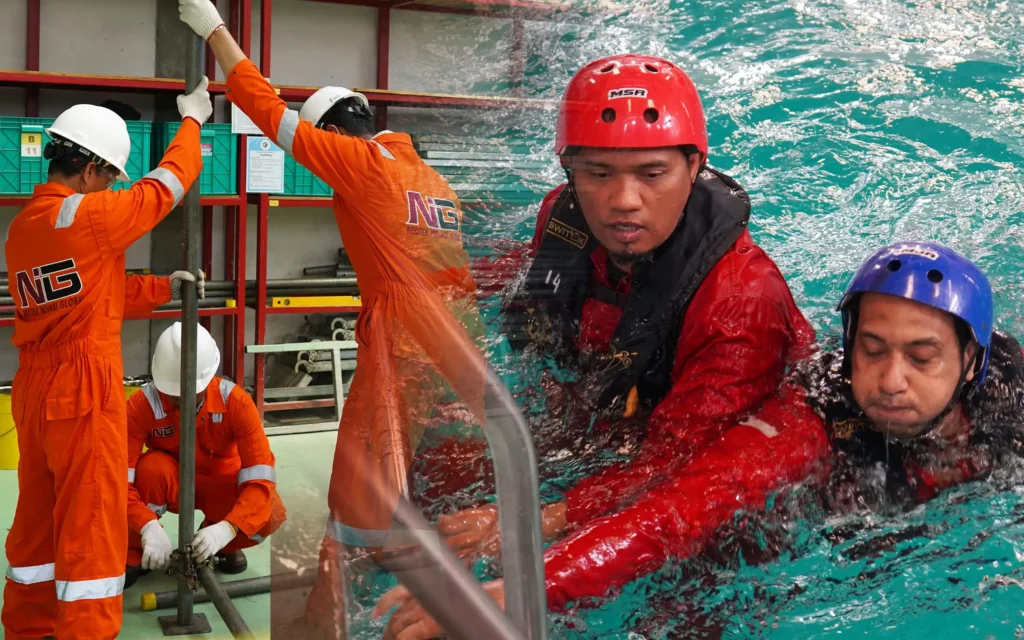NASP 30-Hour General Industry Safety
Accreditation: National Association of Safety Professionals (NASP – USA)
Delivery Method: Online / Classroom / Onsite Session
Duration: 30 Hours (3–5 days)
Target Audience
Workers, supervisors, and safety professionals in manufacturing, warehousing, maintenance, or general industrial environments who require comprehensive OSHA safety training and advanced workplace hazard management.
Course Overview
The NASP 30-Hour General Industry Safety Course is an advanced OSHA-based program providing in-depth knowledge of occupational safety and health practices for general industry settings. The course covers workplace hazards, regulatory requirements, safety management systems, and proactive strategies to prevent accidents and promote a safe work environment.
Participants will engage in discussions, real-life examples, and practical exercises to identify, control, and mitigate hazards, ensuring compliance and safety in the workplace.
Learning Objectives
Upon completion of this course, participants will be able to:
Understand and apply OSHA general industry safety standards
Identify and control hazards in industrial operations
Implement comprehensive safety management systems
Apply advanced practices for materials handling, machine guarding, and electrical safety
Promote a proactive safety culture and continuous improvement
Course Content
Module 1 – Introduction to OSHA and Safety Fundamentals
Overview of NASP and OSHA General Industry Standards
Employee Rights and Employer Responsibilities
Safety Management Systems, Recordkeeping, and Reporting
Module 2 – Walking and Working Surfaces
Slips, Trips, and Falls Prevention
Housekeeping, Aisle Maintenance, and Elevated Surfaces
Module 3 – Electrical Safety
Electrical Hazards in General Industry
Lockout/Tagout (LOTO) Procedures
Grounding, Safe Tool Usage, and Temporary Power
Module 4 – Hazard Communication (HAZCOM)
Understanding Safety Data Sheets (SDS)
Labeling, Chemical Hazard Classification, and Training Requirements
Module 5 – Machine Guarding and Equipment Safety
Machine Guard Types and Applications
Preventing Caught-In and Amputation Hazards
Maintenance and Inspection Procedures
Module 6 – Material Handling and Ergonomics
Manual and Mechanical Lifting Techniques
Forklift and Powered Industrial Truck Safety
Ergonomic Risk Factors and Injury Prevention
Module 7 – Personal Protective Equipment (PPE)
Selection, Proper Use, and Maintenance
Eye, Head, Hand, Foot, and Respiratory Protection
Module 8 – Fire Prevention and Emergency Action Plans
Fire Hazards in Industrial Settings
Emergency Evacuation, Alarm Systems, and Fire Extinguishers
Module 9 – Health Hazards and Environmental Factors
Noise, Chemical, and Biological Hazards
Heat and Cold Stress Management
Indoor Air Quality and Ventilation
Module 10 – Safety Program Implementation & Management
Job Hazard Analysis (JHA) and Risk Assessment
Safety Inspections and Audits
Safety Leadership, Culture, and Continuous Improvement
Module 11 – Review and Final Assessment
Recap of Key General Industry Safety Topics
Knowledge Test, Case Studies, and Group Discussion
Course Evaluation and Feedback
Assessment Method
Certification
Participants who successfully complete the course and pass the assessments will receive a NASP 30-Hour General Industry Safety Certificate of Completion issued by the National Association of Safety Professionals (USA).

















